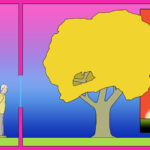While faces get redder and voices get angrier as people debate what addiction is and what to do about it, the first order of business for do-it-yourselfers in addictions recovery is to take action on the evidence that addiction is a health condition and to arrange for health care for ourselves.
The health problem of addiction is often accompanied by mental illness, symptoms of trauma, physical illness, emotional and physical pain, and sleep disruption. Issues of temperament and personality may need assessment. Blood work needs to be done to test for the presence of function and dysfunction, to diagnose illnesses, and to assess suitability for medications. All of these factors need to be provided by, and considered and evaluated by, health care professionals. Ideally, these assessments would be coordinated by one specialist or a team of specialists but you will likely have to cobble together data for a comprehensive evaluation from multiple sources. From all the data, an individualized treatment plan can be devised.
So, the goals for getting medical care are to:
- get immediate care for immediate problems
- get assessed for medications to address addiction or co-occurring mental or physical conditions that exacerbate it
- begin to try to stabilize all conditions
- get referrals for more specialized care
- begin to create and collect data about your health conditions.
In my experience, people with addiction fall somewhere on a continuum of being in an emergency state, an urgent state, or in chronic distress.
Emergency State
If you’re in a state of emergency, call 911.
Urgent State
If you’re in an urgent state, still consider calling 911.
If you are in an urgent state and not calling 911, consider these options in priority order.
Consider the ER. Know that it is through the emergency room (E.R.) that many people with addiction make first contact with the local health care system. E.R.s help stabilize patients briefly, but are limited in the length of care they can provide, sometimes under 24 hours. Hospitals in my locale do not provide addiction treatment, medication-assisted treatment, or prescriptions for detox or pain medications.
Depending upon the system in which the E.R. operates, referrals will be made to additional treatment through emergency evaluation services like these in our locale. Referrals from those services are to local treatment providers (here’s a list of our local treatment providers). Many referrals are for treatment at in-patient facilities, few of which have beds available immediately, most of which require health insurance or a needs-based assessment prior to admission. If you are considered a threat to yourself or others, a stay at a mental hospital will be required. An E.R. visit may result in a range of outcomes, including release into another’s care, time at a detox facility, or a stay at a mental hospital, possibly far from home.
If you’re released from an E.R. without a plan for immediate follow-up care, a return to use is probable.
Consider urgent care. I have taken several people with health insurance coverage with illnesses or injuries that have resulted from addiction – not for addiction itself – to Velocity Care urgent care centers and have been impressed with how quickly the person is seen and how much attention each person is given by the care provider. Velocity Care also makes it routine to provide a printout of services provided for record-keeping. If you’re in state of of physical or mental emergency, however, they will refer you to the E.R. and the visit will waste precious time. However, E.R. wait times are long and an urgent care center might be worth a try if you’re stable enough for it.
Consider walk-in “after hours” care. If you’re in an urgent state during your clinic’s walk-in hours, try to get in there. The clinic will know your case, have access to your records, and may be able to offer more individualized care than an urgent care facility or emergency room.
Consider seeing if a primary care physician (PCP) or nurse practitioner (NP) has an opening today. This is probably the least likely way to get care because most PCPs and NPs are booked solid, but sometimes you can find an opening due to a cancellation.
Chronic Distress
While I appreciate learning that most people “age-out” of addiction, I didn’t get a chance to because I had late onset at age 50, and the people I know with addiction didn’t, so most of us are in an acute state of addiction from having it long-term and/or having it under-treated or maltreated. We’re either actively using, practicing some kind of harm reduction by using less often or using less harmful substances or, like I am, miserably holding on to abstinence.
And hardly a one of us was told to go to a doctor.
It’s not too late.
While we don’t exactly know what directly cures addiction – although buprenorphine for opioid use disorder can seem pretty darn close – conditions that often co-occur with addiction, i.e. mental illness, chronic pain, and sleep disorders, can be directly addressed medically.
Lessening the suffering caused by other conditions can potentially reduce the intensity with which addiction is experienced. Return to use or increased use is correlated with increased stress. Getting treatment for untreated medical conditions can reduce stress.
If you’re semi-stable, you can use the list above for accessing medical care in reverse order. Start with your PCP to begin the laborious process of being set up for appointments with specialists – start first with making an appointment to see a psychiatrist because that can require a lengthy wait – and then continue to see specialists for other problems.
[Personal anecdote: It took me 3 years of pouring over the literature to find this 2009 report citing two studies, one from 1992 and one from 2000, about medication for alcoholism. It states, “[P]atients who achieve abstinence may benefit from taking naltrexone at times when they are at higher risk of relapse, such as on vacations, on holidays, or during a personal tragedy.” I was able to muscle through the 6-month wait time to see a psychiatrist, ran this report by her, and have an arrangement with her that if another of the intermittent bouts of abject longing to return to drinking occurs for me, she’ll prescribe me 3 months of naltrexone. This is a radical approach: less than 9% of people with alcoholism receive medications to treat it.]
If addictions medicine practices, or psychiatrists or psychologists who specialize in addictions are available via self-pay, I would avail myself of them. Clients pay directly for services and the provider does not bill insurance. This is simply too grave of a condition with too dire of consequences for penny-pinching. In my locale, TASL offers direct payment for addictions medicine care. Payment in person by cash is required to make the first appointment and cash or credit cards are accepted after that. TASL explains its services clearly and specifically via phone recording. Select option 3 for new patient information, 540-443-0114.
If you don’t have money and you don’t have health insurance, then you’re going to have to work the system and get some. Scroll down in this post to section 3 entitled “Make appointments” for my explanation on how to do that.
Ignore Naysayers
The evidence is in that the earth is round, although it was believed for a long time to be flat.
The evidence is in that addiction is a health problem although it’s been believed to be a personal, behavioral, and moral problem for a long time.
Addiction is a treatable, chronic disease that can be managed successfully. Research shows that combining behavioral therapy with medications, where available, is the best way to ensure success for most patients. Treatment approaches must be tailored to address each patient’s drug use patterns and drug-related medical, psychiatric, and social problems.
– National Institute on Drug Abuse, NIDA
Some of the most resolve-strengthening advice I’ve ever been given as a person in recovery was given to me by another person in recovery and I’ll share it with you:
Trudge, baby, trudge.
However you can – run if you can, trudge if you have to – get yourself to a doctor.
. . . . .
Last updated 9/16/16
This post is part of a series contained on this blog in the DIY Addictions Recovery category.
A table of contents for the DIY Addictions Recovery series of posts is here.
Disclosure and disclaimer: I am a counselor at a community services agency. The opinions expressed here are mine alone and do not necessarily reflect the positions of my employers, co-workers, family members or friends. This content is for informational purposes only and is not a substitute for medical or professional advice. Consult a qualified health care professional for personalized medical and professional advice.


